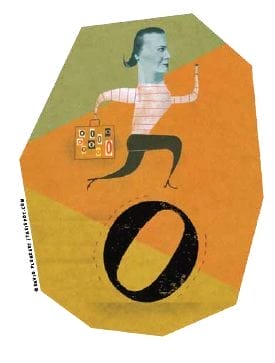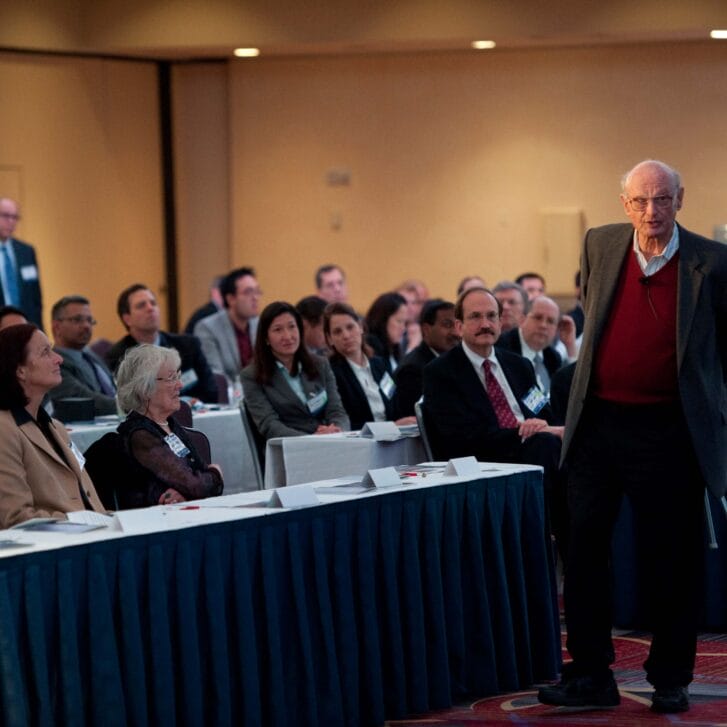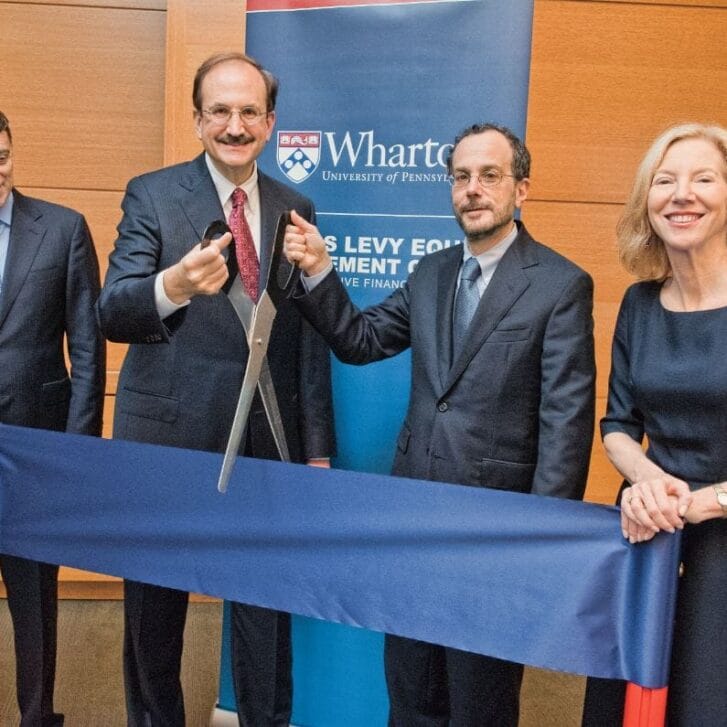There’s an old joke about a businessman who gives away his products. A customer asks: “How do you make money doing that?” He answers: “I make it up on volume.”
It’s nonsensical, yes. But a funny thing has happened: Giving away the product has become a legitimate business model on the Internet and even beyond. And it’s been getting increased attention. Author Chris Anderson will publish a new book in July titled, Free: The Past and Future of a Radical Price. It’s a follow-up to his Wired magazine cover story last year, “Free! Why $0.00 is the Future of Business.” Anderson, the editor of Wired and a former Economist reporter, also wrote the 2006 book, The Long Tail, in which he observed how companies such as Amazon.com and Netflix were thriving by offering gigantic catalogs of products that each sell in small quantities. Today, those companies are among the few thriving through a recession.
Anderson isn’t alone in exploring what has been dubbed “freeconomics.” Venture capitalist Fred Wilson of Union Square Ventures popularized the term “freemium” to describe an emergent business model — popular among online service and software companies — of acquiring users en masse with a free offering but charging for an enhanced version in hopes of subsidizing the free usage.
Even businesses that aren’t about to give away the store can benefit from an understanding of the forces behind “freeconomics” by re-imagining old models of charging for their products and services. Technologist Jeff Jarvis, in his new book, What Would Google Do?, wonders if there’s a revenue-generating “free” model for automobile makers. Could automakers adopt the Google model and give away advertising-supported cars? Once you accept that price need not be tied to the cost of production and begin thinking creatively, new possibilities can emerge — even for offline products, says Kevin Werbach, Wharton professor of legal studies and business ethics. “There’s no fundamental reason why gasoline couldn’t be free and you would pay an annual fee for usage of your car,” Werbach says. “Similarly, there’s no reason that cars couldn’t be free and you would pay a service fee for gas. Neither of those models makes much sense in the marketplace today, but why not?”
According to Werbach, a startup manufacturer of electric cars, called Better Place, is looking at making its cars available at a low price and charging for new batteries, just as printer manufacturers offer low-cost printers and put a hefty price on ink cartridges. “People look at it like it’s crazy, but if a car is part of an integrated ongoing service, then there’s no fundamental reason to allocate the price one way or another.”
But what is really new here? After all, “free” has been around “probably since the beginning of business,” says Z. John Zhang, a Wharton marketing professor who has authored books on pricing strategy. “You go to a supermarket and they give you free samples and then you buy a whole box. Some bars let women go in for free and they charge the men. ‘Free’ is one of the most powerful words in marketing. It truly motivates people. If you see ‘free,’ even if you don’t want it, you’re going to get it. Marketers will take every opportunity to use that word.”
Bending the Demand Curve
Indeed, the appeal of “free” has been shown to be so extraordinary that it bends the demand curve. “The demand you get at a price of zero is many times higher than the demand you get at a very low price,” says Kartik Hosanagar, a Wharton professor of operations and information management who studies pricing and technology. “Suddenly demand shoots up in a nonlinear fashion.” Josh Kopelman, a venture investor and entrepreneur who founded Half.com, has written about what he dubbed “the penny gap.” Even charging one cent for something dramatically lessens the demand [generated at] zero cents.
It’s no surprise that many companies have worked “free” into their offers in a number of different ways. “Cosmetics are never on sale. They say, ‘Buy this at regular price and get a free gift.’ That protects the normal price,” says Wharton marketing professor Stephen J. Hoch. Adobe gives away its Adobe Reader software for displaying documents that use the company’s PDF electronic document format, but charges corporations for the Adobe Acrobat software needed to create the documents. “If you charge for both, the software will never take off,” states Hosanagar.
Of course, products and services offered for free aren’t really free; they’re just paid for in another way. Cross-subsidies have been a selling strategy for ages, the classic example being Gillette’s move a century ago to sell razors cheaply to create demand for expensive blades, long before printer makers adopted a similar strategy with printers and their supplies.
Then there are two-sided markets, which derive revenue from two sets of customers. In those, “whichever side is more price inelastic [less sensitive to price changes], that’s the side you want to charge more [for],” says Zhang. In the case of “Ladies’ Nights,” he says, establishments may increase overall revenue by letting women in for free to attract more males — who are price inelastic in that their desire to be there will not be greatly affected by entrance price.
Newspapers traditionally have charged readers as well as the advertisers who want to reach those readers. For years, however, some types of publications have been given away to readers for free, with publishing costs supported by advertisers. But the profusion of free content online has made reader demand extremely elastic — suddenly sensitive to any price above zero — and many publishers are fumbling with revised models, including cross-selling. The Wall Street Journal, for example, now sells wine to readers at wsjwine.com, Zhang notes.
What’s new, of course, is the Internet, which makes the marginal cost of delivering one more product close to zero. As Anderson explains in a February Wall Street Journal article, “Digital goods — from music to Wikipedia — can be produced and distributed at virtually no marginal cost … making price a race to the bottom.” Add in easier sourcing online of cheap products and materials, and the Internet means cost is evaporating from the system and opportunities for free offers have exploded.
Beyond minimizing distribution costs, the Internet has fostered other distinct trends that have pushed prices and consumer expectations toward zero. Two-way markets become more sophisticated online — Google is able to offer web searches for free by matching advertisers to what people appear to be seeking: Search for cars, get some car ads. “Some of these transactions could not be done before, because transaction costs for matching an advertiser with a consumer were too high,” says Hosanagar. This has inspired online firms, such as Google, Yahoo and Facebook, to take advantage of the nonlinear allure of “free” to build giant audiences in hopes of future revenues, even in cases where revenues from ads or other sources are not covering the cost of the free service, says Hosanagar.
Other factors also have been at play. On the web there’s little financial barrier to set up a store, an information site or blog, and compete with established players who may have high fixed costs and brick-and-mortar investments. This easy entry into markets has played a role in creating what BusinessWeek called the “free-labor economy.” People are putting together elaborate and sometimes useful sites at no cost other than time. Simultaneously, digital technology has enabled easy copying of copyrighted materials — music, movies, photos and news articles — that are or were products of traditional industries. The result of all this has been a change in consumer expectations. A “culture of free” has emerged — there are a lot of things for which people simply don’t expect to pay. Forced to compete against free offerings — in some cases from competitors churning through investors’ money to aggregate eyeballs and hoping to sell out without necessarily making a profit — old-line businesses have suffered.
Consumers’ sense of entitlement to free content online “has had catastrophic effects — meaning both large and quick — that I don’t think anyone would have predicted,” says Hoch. “It’s had a yet unknown catastrophic effect on the news. It’s had a catastrophic effect on music. Clearly the concept that you can make it up in volume is bogus, because you can’t. Music CD sales have gone from $13 billion in the U.S. to about $7 billion since 2001 while legal digital downloads generated about $1.5 billion in sales.”
Newspapers and magazines, saddled with high fixed costs and high distribution costs, have been hit by both the free culture online and the ease with which their product — which is costly to produce but easy to copy and paste — is hijacked by free sites put together by unpaid bloggers. Most papers have resorted to offering their content for free, but online ad revenues alone have not covered their high fixed costs. A February Time magazine cover story by longtime print journalist Walter Isaacson titled, “How to Save Your Newspaper,” takes on the threat of “freeconomics” squarely. “This is not a business model that makes sense,” Isaacson writes. He suggests newspapers figure out how to protect their intellectual property and charge readers real money to consume it.
Zhang agrees: “Right now, newspapers are doing things that level the playing field, bringing themselves down to the level of lower-quality competition. They should move to the high-end and exploit their advantages and distinctions.” Isaacson advocates for a system that makes it easy for readers to pay small “micropayments” online for the articles they view. But that’s easier said than done. The sort of online micropayments Isaacson and others advocate have a poor track record, in large part because the psychology of the “penny gap” is hard to overcome. It’s especially difficult because people have come to expect a vast selection of no-cost news online. “The last thing you want to do is get people addicted to free. If you’re going to go free, you ought to expect that it is going to be the price forever,” says Hoch. “If you’re going to be a low price seller,” he adds, “you sure as hell better have low costs.”
More Software Apps, Fewer People
The effects of the free culture online have had a hard impact on offline businesses. Many jobs once done by people are turning into software applications, Anderson says. “Your cranky tax accountant has morphed into free TurboTax online, your stockbroker is now a trading web site and your travel agent is more likely a glorified search engine.”
Google has used profits from websearch ads to finance moves into other free online applications, confounding competitors who had grown accustomed to charging money for similar products. Google Docs, a free suite of office applications (word processor, spreadsheet, etc.) competes with software for which Microsoft normally charges hundreds of dollars. Microsoft has been forced to respond by promising that free web versions of its software suite will be available in the future. “There can be a situation where, fundamentally, the amount of money in the system changes,” says Werbach. That’s not great news for companies with fixed costs to meet, such as payroll.
Companies have experimented and struggled with a wide spectrum of pricing strategies. Some see hope in the “freemium” model, giving away a basic version of a product, but charging for premium features. Yahoo lets tens of thousands of fantasy football players participate in its online leagues for free every season, then lures them into paying for real-time game statistics or player scouting reports. Every tax season, companies — including H&R Block and Intuit — offer free basic online tax filing, but charge for more complicated returns. Newspaper web sites have grappled with the question of what content to give away and what to lock up in areas that readers must pay to see.
Some businesses have been especially creative. In 2007, the rock band Radiohead offered its album In Rainbows as a download for a “pay what you want” price. Research firm ComScore estimated 38% of people downloading the album paid an average of $6. A later release of the album as a physical CD sold more copies than the band’s prior two CDs.
“A business needs to adapt its revenue models to new technology,” says Zhang. Not everyone can compete against free, but there are still creative ways — more ways now than ever — to employ the strategy.
“The problem is in thinking the business model of your industry is ordained forever,” says Werbach. “Business isn’t static, and it’s less static today than it’s ever been. The great challenge the Internet poses is that it makes it possible to very quickly shift the allocation of money in certain industries. It’s not easy to go through that kind of transformation, but that’s life. Successful companies are the ones that appreciate that.”

























